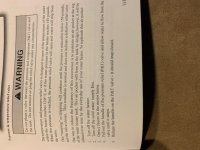crmfghtr
Well-known member
After almost 2 months in this new Landmark Concord, I have noticed water in the bottom of the water heater pan where the outside door is. The first time I thought I fixed the problem because the anode rod was leaking. I tighten the rod and it was still leaking. I opened the water heater guide and read that if the water heater is seeping it may have lost the air pocket at the top of the tank. Without going into all the steps, I removed the anode rod in the process and put new teflon tape on it and replaced it back on the tank.
Yesterday NO water in the pan! Hooray! Today I noticed water in the bottom of the pan again, not much maybe 1/8 of a cup.
Here is my question to some experts here. Is it normal for the pressure relief valve to allow water to seep or open? When I checked the pressure relief valve I did not see or feel any water leaking from it. So if the anode rod is not leaking where else would the water come from?
Anyone want to tackle this question it is driving me crazy.
Yesterday NO water in the pan! Hooray! Today I noticed water in the bottom of the pan again, not much maybe 1/8 of a cup.
Here is my question to some experts here. Is it normal for the pressure relief valve to allow water to seep or open? When I checked the pressure relief valve I did not see or feel any water leaking from it. So if the anode rod is not leaking where else would the water come from?
Anyone want to tackle this question it is driving me crazy.

